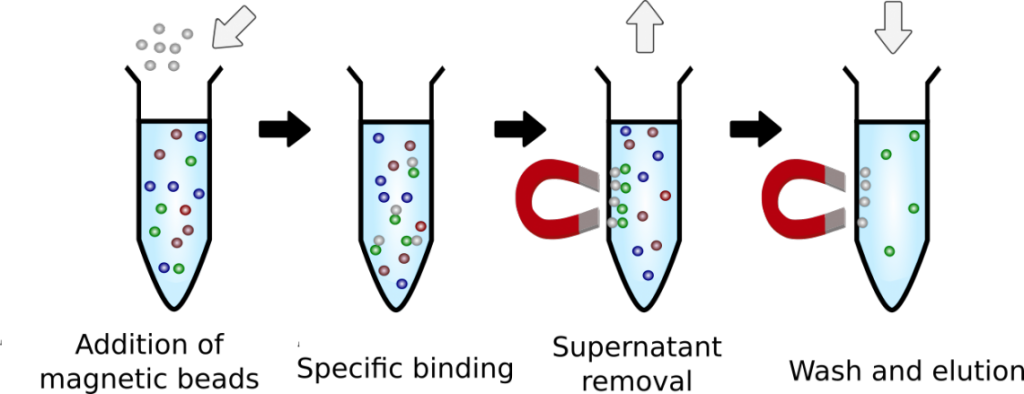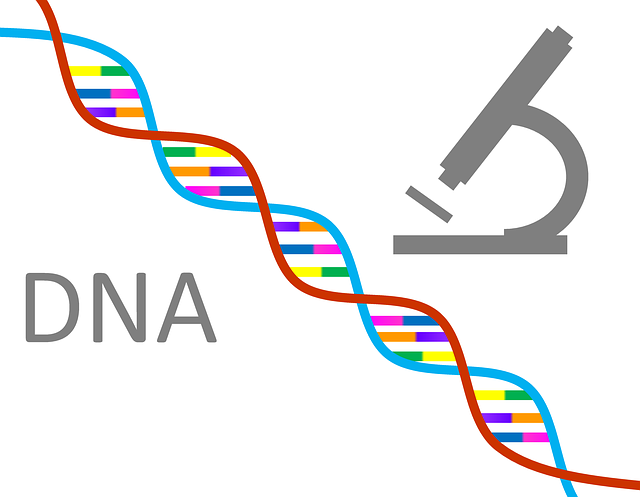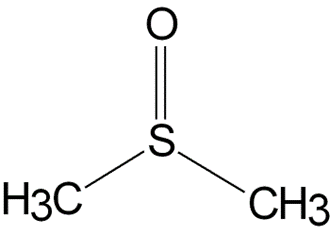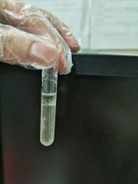Professional Manufacturer of Biomagnetic Beads
The technology of bio-magnetic beads binding to DNA is an indispensable part of modern molecular biology and biotechnology, providing scientists with an efficient and convenient method for separating, purifying, and enriching specific DNA sequences. The following is a detailed discussion of how bio-magnetic beads bind to DNA and the applications of this technology in various fields.
1. Structure and Characteristics of Bio-Magnetic Beads
Bio-magnetic beads are usually tiny spherical particles with diameters ranging from tens of nanometers to several micrometers. They consist of a magnetic core covered by one or more layers of polymers or other materials. This coating provides chemical stability to the beads. It offers space for surface modification, enabling the beads to carry specific functional groups or ligands, thereby achieving selective binding to target molecules.

2. Main Mechanisms of Magnetic Beads Binding to DNA
Covalent Binding: Forming stable covalent bonds through chemical reactions is a durable and specific binding method. For example, the surface of magnetic beads may contain epoxy groups, which can directly react with the hydroxyl groups (-OH) on DNA to form ether bonds. This type of connection is very strong and is suitable for applications that require the maintenance of a bound state for a long time.
Ion Exchange: Based on the principle of electrostatic interaction, positively charged magnetic beads can attract the negatively charged phosphate backbone of DNA through electrostatic forces. This method is simple and fast, but it has a higher degree of non-specificity, making it suitable for preliminary screening or processing of large sample volumes. To improve selectivity, specific cationic groups can be introduced on the surface of the magnetic beads to enhance the capture ability of target DNA fragments.
Affinity Chromatography: Utilizing highly specific interactions between biological molecules, such as antigen-antibody, enzyme-substrate, or nucleic acid hybridization. For example, in the commonly used ChIP experiments in genomic research, antibodies targeting specific transcription factors are fixed on the magnetic beads, and then the DNA regions bound by these transcription factors are indirectly combined through immunoprecipitation. Additionally, magnetic beads with complementary oligonucleotide probes can be used to directly capture the required DNA sequences.
Streptavidin-Biotin System: This is one of the most commonly used high-sensitivity and specificity binding strategies. First, the DNA to be analyzed is labeled with biotin; then, the biotin-labeled DNA molecules are captured by streptavidin-modified magnetic beads. Since the binding force between the two is extremely strong, even in complex sample backgrounds, a high recovery rate can be guaranteed.
Antibody Binding: In addition to the aforementioned ChIP experiments, antibodies can also be used directly to recognize and bind certain specific DNA modifications(such as methylation). At this time, the magnetic beads serve as carriers for the corresponding antibodies, achieving selective enrichment of DNA fragments with specific epigenetic features.
Physical Adsorption: Although this method is non-specific, it still has applications in some cases. For example, in some rough DNA extraction processes, untreated magnetic beads can non-specifically adsorb a certain amount of DNA due to their large specific surface area and appropriate surface properties. However, this method is usually only suitable for pre-processing steps and is not suitable for precise separation of target DNA.
3. Application Fields of Bio-Magnetic Beads
The technology of bio-magnetic beads binding to DNA has been widely applied in various scientific and technological fields:
Genomics: Including whole-genome amplification, targeted sequencing library construction,single-cell gene expression analysis, etc.
Clinical Diagnosis: Used for pathogen nucleic acid testing, early cancer screening, gene typing in personalized medicine, etc.
Forensic Science: Helps to find trace DNA evidence in crime scene samples, supporting judicial investigations.
Environmental Monitoring: Evaluating the structure and functional changes of microbial communities in water, soil, and other environments.
Agriculture and Food Industry: Detecting genetically modified crop components, ensuring food safety, etc.
With the advancement of science and technology, the efficiency of bio-magnetic beads binding to DNA is also increasing, bringing new, efficient, and convenient methods to fields such as university research and disease diagnosis. In the future, we can look forward to magnetic bead technologies with broader application scenarios.
Supplier
Shanghai Lingjun Biotechnology Co., Ltd. was established in 2016 which is a professional manufacturer of biomagnetic materials and nucleic acid extraction reagents.
We have rich experience in nucleic acid extraction and purification, protein purification, cell separation, chemiluminescence, and other technical fields.
Our products are widely used in many fields, such as medical testing, genetic testing, university research, genetic breeding, and so on. We not only provide products but also can undertake OEM, ODM, and other needs. If you have a related need, please feel free to contact us at sales01@lingjunbio.com.






